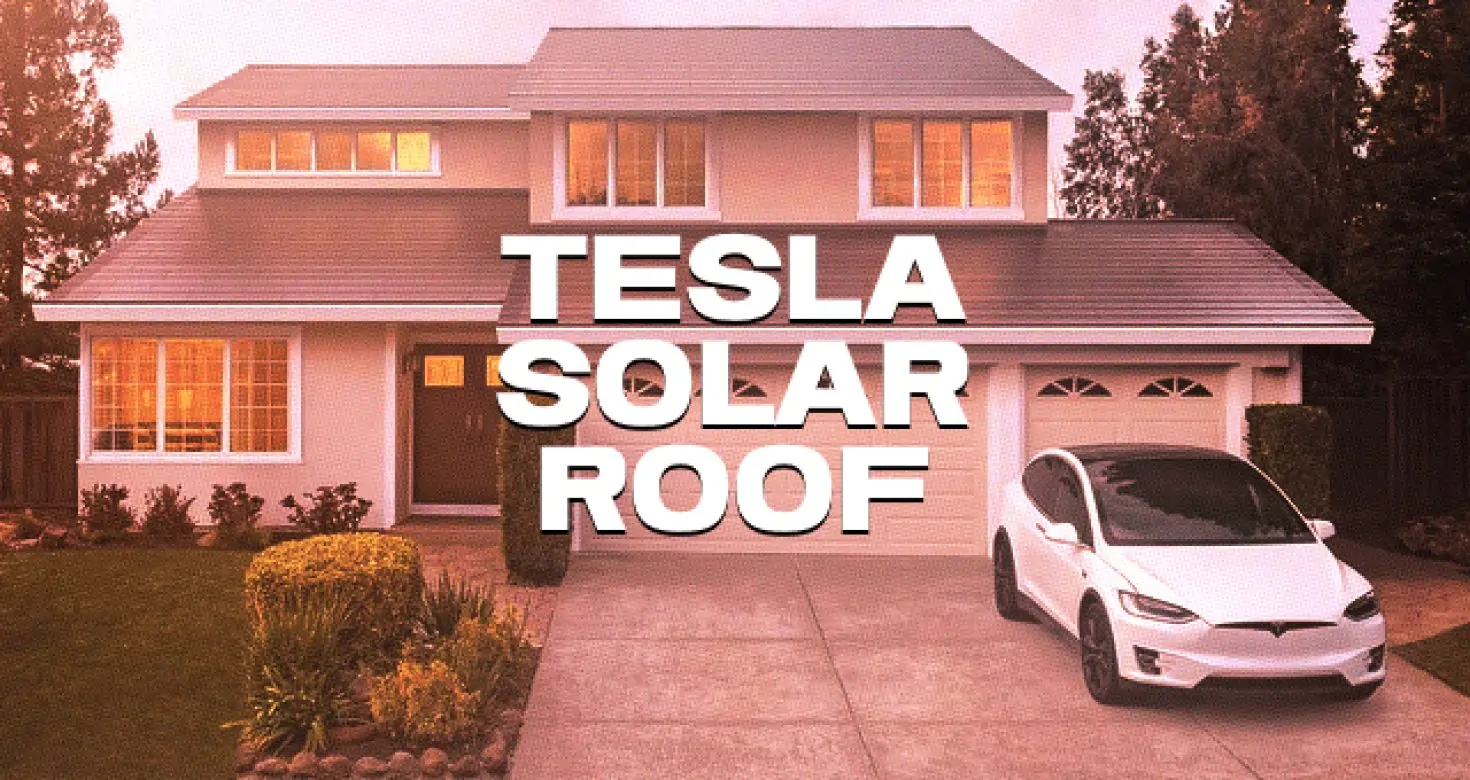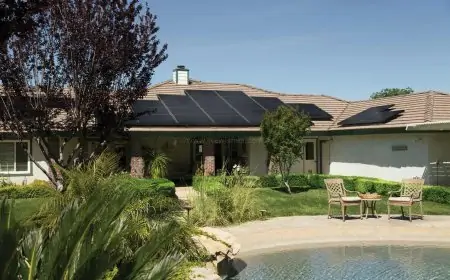Hey there, humans! Welcome to another deep dive into the future of useful and/or fun technology that your friends at WeWishes see on the horizon. com. Today, we take a look at the Tesla Solar Roof — a modern, cutting-edge solution for powering your life and home with clean, renewable energy. What if you can never pay for power again, and still use air conditioning, charge an electric vehicle (EV) and never have a power bill? Sounds like a dream, right? At least, for some early adopters, that’s reality.
In this article, we’re going to go through the nitty, gritty details of the Tesla Solar Roof, its costs, the benefits, the ticks and its value for the money: Is it worth it for you? Borrowing experiences, information and expert analysis to finally answer the question on everybody’s mind: Is the Tesla Solar Roof worth it? Let’s dive in!
Also read: 10 Best Ways to Find a Cell Phone Number Online
What Is the Tesla Solar Roof?
The Tesla Solar Roof is not your average solar panel installation. Rather than nail fat panels onto your existing roof, Tesla replaces your roof with flush, glass-like tiles that double as small solar panels. These tiles integrate seamlessly into the look of your home, help with curb appeal for your house and also in the generation of electricity from the sun, along with Tesla’s Powerwall batteries and an easy-to-use app, the net result of which promises to power your household, charge your electric vehicle and maybe even make you free of the electrical grid.
Also read: Factors to Consider When Installing a Solar Panel with Battery Storage
What's cool is it being united and easy. Unlike conventional solar, which often entails cherry-picking panels, batteries and providers from different sources, Tesla provides a one-stop shop.
It all — tiles, batteries, installation, monitoring — comes together and just works. There’s a cost to this convenience, however, and we are going to look into the factors that determine whether going with Tesla’s Solar Roof is worth it in terms of cost, performance, and long-term value.
Why Go Solar? The Big Picture
Before we get into the nitty-gritty, let’s talk about why solar energy matters. Homes in the U.S. consume about 10,600 kilowatt-hours (kWh) of electricity annually, according to the U.S. Energy Information Administration (EIA). Most of this comes from fossil fuel-powered grids, contributing to greenhouse gas emissions. Solar energy offers a clean alternative, reducing your carbon footprint and reliance on non-renewable sources.
Also read: The Ultimate Guide to Understanding Solar Panel Prices
For EV owners, solar is a game-changer. Charging an electric car at home with solar power means you’re driving on sunshine, not coal or gas. Plus, with rising electricity costs (the average U.S. residential electricity price was 16.88 cents per kWh in 2024, per the EIA), solar can save you money over time. Add in the potential for energy independence during power outages, and it’s easy to see why solar is gaining traction.
The Tesla Solar Roof Experience: A Year in Review
To understand the Tesla Solar Roof’s real-world performance, let’s follow the journey of a homeowner who’s lived with it for a full year. This user, based in New Jersey, installed a 29.3 kW solar array with three Powerwall 3 batteries (40.5 kWh total capacity) in July 2022. Their goal? Power a home full of appliances, charge a Tesla Model S daily, and achieve energy independence. Here’s what they learned after experiencing all four seasons.
The Setup: Specs and Installation
The system includes:
-
29.3 kW Solar Roof: A massive array of solar tiles covering multiple roof pitches, generating up to 260 kWh on a perfect summer day.
-
Three Powerwall 3 Batteries: Each with 13.5 kWh capacity, storing excess solar energy for nighttime or cloudy days.
-
Tesla App: A real-time dashboard showing energy production, consumption, battery status, and grid interaction.
The installation process, which took eight months from signing the purchase agreement in November 2021 to activation in July 2022, wasn’t without hurdles. It involved paperwork, inspections, and coordination with the local utility and town. Tesla assigns an advisor to guide you through the process, from satellite-based roof measurements to final quotes and scheduling. Despite Tesla’s history of supply chain issues and pauses in Solar Roof production, this user’s experience was smooth, with professional installers handling everything.
Seasonal Performance: The Numbers Tell the Story
The Tesla Solar Roof’s performance varies dramatically by season, weather, and energy usage. Here’s a breakdown of how it performed over the year:
Summer: Sunshine Galore
In New Jersey’s long, sunny summer days, the Solar Roof shines—literally. On a typical day, it generated around 200 kWh, peaking at nearly 300 kWh on the best day. With sunrise at 6 a.m. and sunset around 9 p.m., the system easily covered the home’s needs, including air conditioning (the second-largest energy draw) and daily EV charging (the biggest draw). Excess energy filled the Powerwalls and was sent back to the grid, earning net metering credits. Most summer days ended with net-negative grid usage, meaning the homeowner produced more electricity than they consumed.
Also read: How CRO Fixes Website Traffic That Isn’t Converting
Fall: Efficiency Sweet Spot
As days shortened and temperatures dropped, solar production dipped to around 120 kWh on clear days. However, lower air conditioning use meant the home’s energy needs were fully met by solar during the day, with Powerwalls handling nighttime loads. Fall was a standout season, with nearly every day ending in net-negative grid usage, building up substantial net metering credits.
Winter: The Tough Season
Winter in the Northeast is brutal for solar. Short days (sunset as early as 4 p.m.), frequent cloud cover, and snow reduced production to as low as 20–70 kWh daily. Cloudy days were particularly challenging, with only one in ten days being sunny. The homeowner’s natural gas heating system meant solar couldn’t offset heating costs, and EV charging efficiency dropped due to cold temperatures (a commute that used 15% battery in summer took 20–30% in winter). November, December, and January saw positive net grid usage, meaning the home pulled more from the grid than it produced. However, accumulated net metering credits kept bills at $0.
Spring: The Surprise Champion
May turned out to be the best month for excess solar production. With nearly every day sunny, the system generated 8,500 kWh while the home used 6,500 kWh. Fewer thunderstorms compared to June and July meant consistent output, and lower air conditioning needs kept consumption in check. A smart mattress cover (the Eight Sleep Pod) also reduced AC use by cooling the bed independently, saving energy.
The Numbers: Costs and Payback
The total cost for the Solar Roof, Powerwalls, and installation was $129,884. A federal tax credit of nearly $30,000 (now up to 30% in New Jersey) brought the net cost to $93,000. Over the year, the system produced 54 megawatt-hours (MWh) of electricity, which would have cost $9,600 at average utility rates. Dividing the net cost by annual savings yields a payback period of just under 10 years—within the industry’s typical 6–10-year range. With a 25-year warranty, the system could generate free electricity for 15 years after payoff.
Also read: Unraveling Solar Potential: A Curved Path to Green Energy
However, the homeowner notes that cheaper setups (like traditional solar panels) could shorten the payback period. A smaller 19 kW panel array was considered but would have produced less electricity, potentially offsetting savings. The user also muses about increasing electricity use (e.g., switching to electric heating) to maximize the system’s value, given their consistent net-negative production.
Quirks and Perks
Living with a Tesla Solar Roof comes with unique experiences:
-
$0 Bills (Mostly): Net metering credits ensured $0 electricity bills, despite positive grid usage in winter. However, the utility charged a $57.50 monthly connection fee, slightly spoiling the “zero” claim.
-
Power Outage Resilience: During thunderstorms, the system seamlessly switched to solar and battery power. The Tesla app notified the homeowner of grid disconnections, and the Storm Watch feature preemptively charged Powerwalls before big storms. The system could sustain the home (minus EV charging) for days off-grid.
-
Snow Behavior: The solar tiles stay slightly above freezing, melting light snow instantly. Heavy snow accumulates but slides off in sheets due to a warmed layer of water, sometimes piling up around the house. This can be both amusing and inconvenient (think shoveling ice sheets blocking your driveway).
-
Learning Energy Usage: The Tesla app revealed surprising insights, like the home’s baseline 400-watt draw, minimal energy use from lights and phones, and massive spikes from microwaves, toasters, AC, and EV charging.
Also read: World Environment Day 2024 Quotes and Slogans, Posters, Theme and More
Is It Worth It? Weighing the Pros and Cons
The Tesla Solar Roof is undeniably cool, but is it worth the hefty price tag? Let’s break it down.
Pros
-
Sustainability: Powering your home and EV with solar reduces your carbon footprint. The EIA estimates that solar households can cut CO2 emissions by 3–4 tons annually.
-
Energy Independence: With Powerwalls, you’re protected from outages and can theoretically go off-grid, a major plus in areas prone to blackouts (e.g., 2024 saw over 1,000 major U.S. outages, per the National Oceanic and Atmospheric Administration).
-
Aesthetics: The solar tiles look sleek, boosting home value and curb appeal. A 2023 Zillow study found solar-equipped homes sell for 4.1% more on average.
-
Integration: Tesla’s ecosystem (tiles, batteries, app) is seamless, making monitoring and control a breeze.
-
Long-Term Savings: A 10-year payback period is reasonable, with decades of free electricity afterward.
Cons
-
High Cost: At $93,000 after tax credits, it’s pricier than traditional solar setups, which can cost $20,000–$40,000 for similar capacity, per EnergySage.
-
Seasonal Variability: Winter performance lags, especially in cloudy regions, requiring grid reliance or careful energy management.
-
Complex Installation: The eight-month process, paperwork, and potential supply chain hiccups demand patience.
-
Utility Fees: Connection charges (like the $57.50 monthly fee) can undermine the “$0 bill” dream.
Who’s It For?
The Tesla Solar Roof is ideal for:
-
Early adopters willing to pay a premium for cutting-edge tech and aesthetics.
-
EV owners in sunny regions who want to charge with clean energy.
-
Homeowners with old roofs needing replacement, as the Solar Roof doubles as a new roof.
-
Those in outage-prone areas seeking energy independence.
It’s less practical for budget-conscious buyers or those in cloudy climates with low electricity needs. Traditional solar panels may offer better value for these folks.
The Future of Solar: What’s Next?
The Tesla Solar Roof is a glimpse into a sustainable future, but it’s still evolving. Tesla’s rumored bidirectional charging for EVs by 2025 could turn your car into a massive backup battery (a Tesla Model S battery equals 7–8 Powerwalls). Other EVs, like the Ford F-150 Lightning, already support this, hinting at a world where homes need only a small solar array, an inverter, and a car battery to stay powered during emergencies.
As grids face increasing strain—2024 saw record heat waves and blackouts, per the National Renewable Energy Laboratory—solar adoption is critical. The International Energy Agency projects solar will account for 22% of global electricity by 2030, up from 10% in 2023. Innovations like Tesla’s Solar Roof are paving the way, making sustainable energy more accessible and attractive.
Final Thoughts: A Human Perspective
So, was the Tesla Solar Roof worth it? For our New Jersey homeowner, the answer is a resounding yes. Despite the high cost and winter challenges, the system delivered $0 electricity bills, outage protection, and the satisfaction of living sustainably. The Tesla app turned energy monitoring into a nerdy joy, revealing how much power everyday tasks consume. From melting snow to powering an EV, the Solar Roof proved both practical and futuristic.
At WeWishes.com, we’re all about exploring tech that makes life better, and the Tesla Solar Roof fits the bill. It’s not for everyone—budget and climate matter—but for those who can swing it, it’s a bold step toward a cleaner, more resilient future. Whether you’re an eco-warrior, a tech enthusiast, or just tired of utility bills, the Solar Roof offers a compelling case. So, humans, what do you think? Ready to harness the sun’s power? Let us know in the comments, and stay tuned for more tech deep dives at WeWishes.com!























